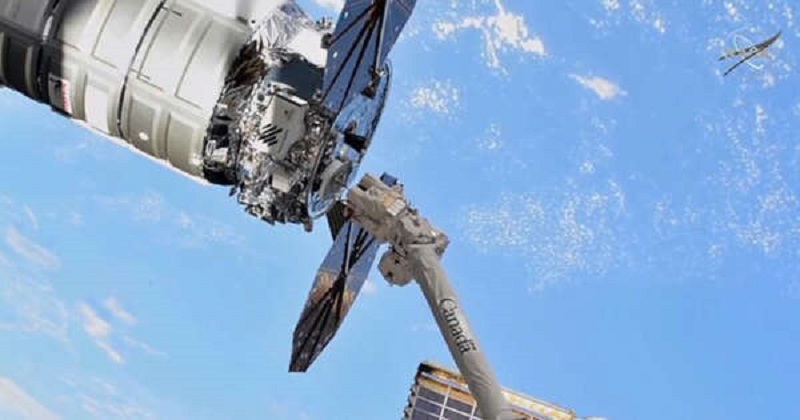
On Monday, the Cygnus spacecraft docked with the International Space Station, bringing new supplies, cargo, and experiments for astronauts in zero-gravity. Nasa verified the docking when the flying laboratory’s Canada Arm secured the SS Piers Sellers Cygnus spacecraft.
‘Your shipment of science, supplies, and snacks has arrived!’ Nasa shared as the Northrop Grumman cargo resupply mission arrived with the station with a novel experiment to demonstrate growing plants in zero gravity without soil. The spacecraft has previously taken off from Virginia’s Wallops Flight Facility on an Antares rocket.
The NG17 resupply mission features skin ageing and tumour cell research, as well as technological testing for oxygen production, batteries, and plant growth. In microgravity, the Colgate Skin Aging experiment examines cellular and molecular changes in modified human skin cells. According to Nasa, the findings of this experiment might suggest that these modified cells can be used as a model to quickly assess items that prevent skin from ageing on Earth.
Also Read: India’s R Praggnanandhaa stuns World No.1 Magnus Carlsen at Airthings Masters chess tournament
The MicroQuin 3D Tumor experiment will investigate the effects of medication on breast and prostate cancer cells in space once it arrives at the Station. Scientists claim that these cells can develop in a more realistic three-dimensional model, making it simpler to analyse their structure, gene expression, and cell signalling. The findings might reveal new information about the drug’s target cell protein.
Nasa wants to expand its research into space farming as it prepares for a trip to the Moon and then to Mars. XROOTS is the most recent experiment to dock with the flying laboratory. It investigates hydroponic (water-based) and aeroponic (air-based) approaches and the results might help create larger-scale systems to grow food crops for future space exploration and habitation.
The Solid Fuel Ignition and Extinction (SoFIE) project, which will attempt to better our understanding of how to safely use fire in zero-gravity when humans reach the Moon and Mars in the future, has also arrived on the station. The experiment will take place at the station’s Combustion Integrated Rack, which has a chamber where experiments may safely burn.
The Sofie project was started to reduce the risk of fire in space flight by assessing, testing, and choosing materials that are flammable, odourless, off-gassing-free, and fluid compatible.

Post Your Comments